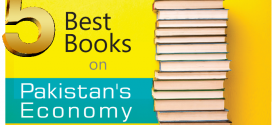Reviewed by: Venky Vembu
Follow the Incredible Journey of a Single Dollar to See How the Global Economy Really Works
You don’t normally look to a Hollywood musical for lessons on the effect of money supply in the economy. Yet, in the 1969 film Hello, Dolly!, the eponymous matchmaker Dolly Levi, played by a peppy Barbra Streisand, channels her late husband Ephraim’s musings to offer an unlikely view on just such a monetary phenomenon.
“Money,” says Dolly, “should circulate like rainwater. It should flow down among the people, through little dressmakers and restaurants, setting up a business here, furnishing a good time there.”
It’s a foundational strand of Economics 101, and the drollery of the cinematic context does nothing to take away from the verity of that policy prescription.
In The Almighty Dollar, author — and economist and broadcaster — Dharshini David offers an equally entertaining account of much the same phenomenon, which is more formally known as the “circular flow of income”: the ‘tidal wave’ of dollar flows from the consumer spending of millions of Americans, to producers across the globe, and back to the US again after taking detours to, and making pit-stops in, many other economic capitals around the world.
Tracking the dollar
The literary device that David deploys to narrate this story is to hypothetically track the movement of a single dollar right from the time a Walmart shopper in Texas, looking for bargain-basement deals in that “temple of low prices and endless offers,” picks up a cheap radio set off the racks. Needless to say, the radio set was mass-manufactured in China, from where Walmart sources much of its low-cost merchandise that feeds on thrifty Americans’ consumerist addiction.
A journey across the world
In that sense, the dollar bill has gone from the shopper’s hands to the owner of a factory in southern China (via Walmart’s intermediation).
Read More: The Euro And Its Threat to the Future of Europe
But it’s not quite the end of the currency note’s notional journey. From there, it goes on a fairly wild ride, which sequentially takes in China’s central bank, the People’s Bank of China; a Chinese overseas investment in Nigeria, with an eye on the latter’s natural resources; the African country’s import of rice from India; our dependence on oil from Iraq to keep our economic engines humming; the embattled West Asian country’s patronage of the Russian arms industry to secure itself; Russian oligarchs’ parking of their ill-gotten gains in Germany; German pension funds’ investments in London; a post-Brexit exploration by a British biochemical firm of market opportunities in the US; and eventually, the return of the dollar as a tip in the hands of that original Walmart shopper (who doubles, in this narrative, as an ill-paid hotel concierge in down-and-out Trumpian America).
For sure, some of the situational aspects of the dollar’s journey appear contrived, and intended solely to propel the story forward, but the broad-sweep portrait that David looks to paint offers a compelling – and breezy – account of the levers that drive the global economy. The American addiction to cheap China merchandise, which puts dollars in the pockets of China’s low-cost manufacturers, has been complemented by equally frenzied accumulation by Chinese officialdom of US Treasuries, or government securities, and by the artificial peg of the Chinese currency to advance its export-led growth.
China’s bluster
And although China, and a handful of other countries, have in recent years sought to ‘talk down’ the dollar’s standing as the world’s preferred reserve currency, such blustery talk has been driven rather more by geopolitical posturing than by economic wisdom.
In more recent times, China has been attempting to advance the case for the Chinese renminbi (also called the yuan) as a reserve currency, but in fact the choice of a reserve currency comes about not by diktat, but emerges organically, over years, perhaps decades, on the strength and financial depth of the underlying economy, the convenience of using that currency, and the network effect of many others using it.
Also, the choice of a reserve currency comes with an implicit bargain: the underlying economy has to run trade deficits and current account deficits to provide liquidity to the rest of the world. It must also open itself up to the risk of seeing hostile governments or traders short-sell the currency for political or economic reasons. Not everyone wants that headache.
As David points out, “[T]he dollar is still the chief reserve currency — that is the currency that most central banks around the world will be happiest to hold — and the standard payment for trade. And with the dollar remaining king, US government bonds are seen as the most prestigious and safest to own.”
India’s deficiencies
When that itinerant dollar bill lands up in the hands of an Indian farmer, David outlines the dynamics – and the deficiencies – of the Indian economy. “Today, one of every five bowls of rice eaten around the world comes from India, but although it grows an abundance of wheat and rice, and produces copious quantities of milk, pulses and spices, it has fared abysmally in the area of keeping its own population well fed. Agriculture in India isn’t lucrative, largely because farms tend to be tiny — on average less than two hectares — which cramps farmers from deriving the benefit of the ‘economies of scale” David notes.
As for India’s famed ‘knowledge economy’, it doesn’t generate employment on the scale required. In any case, since over 50 percent of the population is still tethered to unproductive farming, and haven’t moved higher up the social ladder, their access to education and employable skills remains poor. This, David observes, has the effect of accentuating the inequalities. “Tech alone can’t provide for the masses,” she writes… “It needs to be attracting dollars into an industry that actually provides jobs for a wider section of society.”
Snapshot of global economy
Tracking the dollar thus, David offers an in-depth understanding of various economic and geopolitical factors that shaped and continue to influence the modern world, from the build-up of the housing bubble that fed the 2008 global financial meltdown to the rise of ISIS in parts of West Asia to the Brexit referendum of the UK and to Donald Trump’s election in the United States.
Buy after that breath-taking, round-the-world trip, the book ends on a somewhat sobering note.
Since the 2008 financial crisis, notes David, “something odd” has happened in most rich countries, particularly the US and the UK: productivity growth has slowed down. This has coincided with the rise of the internet giants — such as Amazon — and the ‘gig’ economy, represented by the likes of taxi app Uber. These jobs, she notes, promise lower costs for employers and more flexibility — largely for employers.
But the way capitalism operates in the 21st century has hurt productivity growth, David writes. Companies with an eye on short-term profit maximisation are neglecting big spends that may yield better productivity gains over the long term.
That downer notwithstanding, The Almighty Dollar is an educational field trip around the world, the better to understand the factors that propel the global economy. Perhaps never has a solitary dollar been more profitably expended in the interest of advancing human understanding of the majestic forces at play.
Courtesy: The Hindu Business Line
 Jahangir's World Times First Comprehensive Magazine for students/teachers of competitive exams and general readers as well.
Jahangir's World Times First Comprehensive Magazine for students/teachers of competitive exams and general readers as well.



